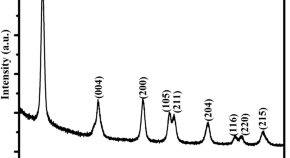Bio-synthesized TiO2 nanoparticles and the aqueous binder-based anode derived thereof for lithium-ion cells
Authors (first, second and last of 7)

Collection
Rosalinda Inguanta is an Associate Professor of Applied Physical Chemistry at the University of Palermo, Italy. The research concerns the synthesis of nanostructured electrochemical devices for electrochemical sensors, batteries and electrolysers, the synthesis of bio-coatings for medical devices and the recovery of precious metals from electronic waste.
Dr. Alan O’Riordan is a Senior Research Fellow at the Tyndall National Institute, Ireland. His research focuses on the fabrication and characterisation of novel nanostructures towards their applications to nano-analytical science, e.g., nano electrochemistry and nano-biophotonics. Complementary research on low-cost nano-fabrication focus on the assessment of performance and potential for scalability to high-volume production of nanostructures is also ongoing.



